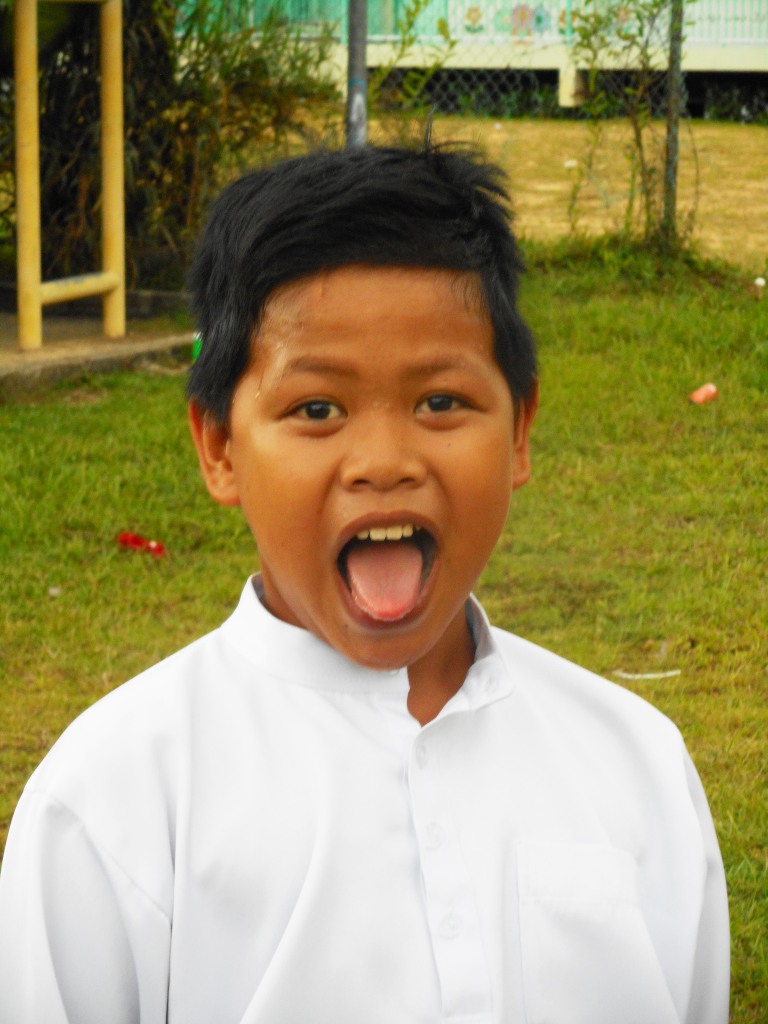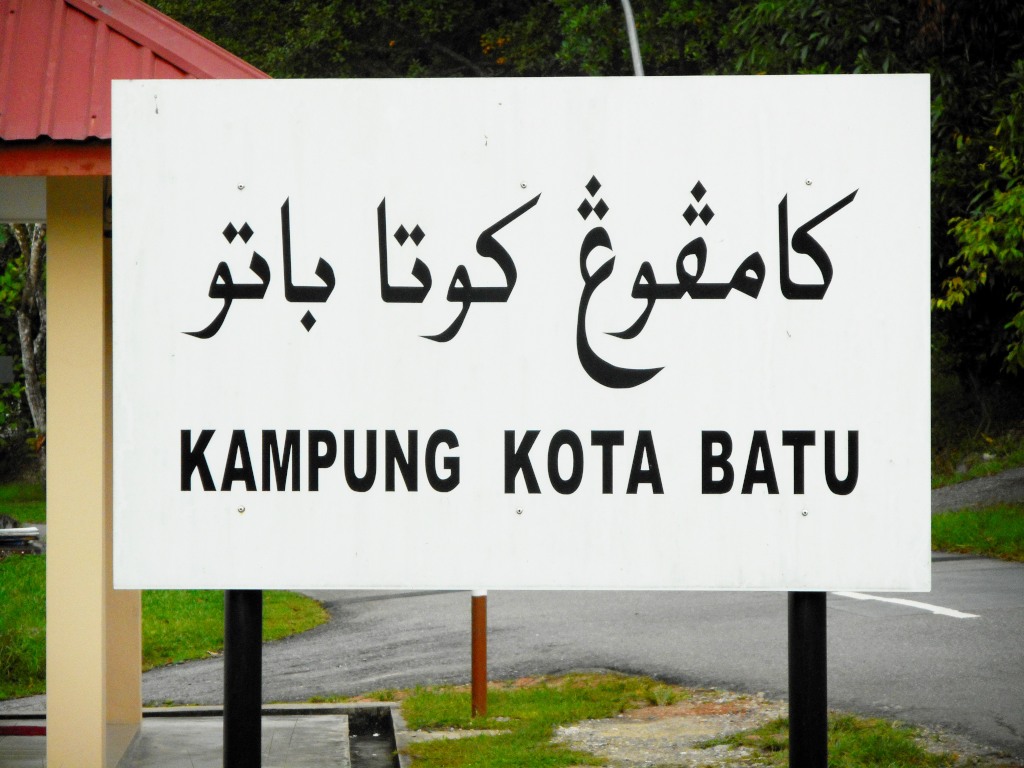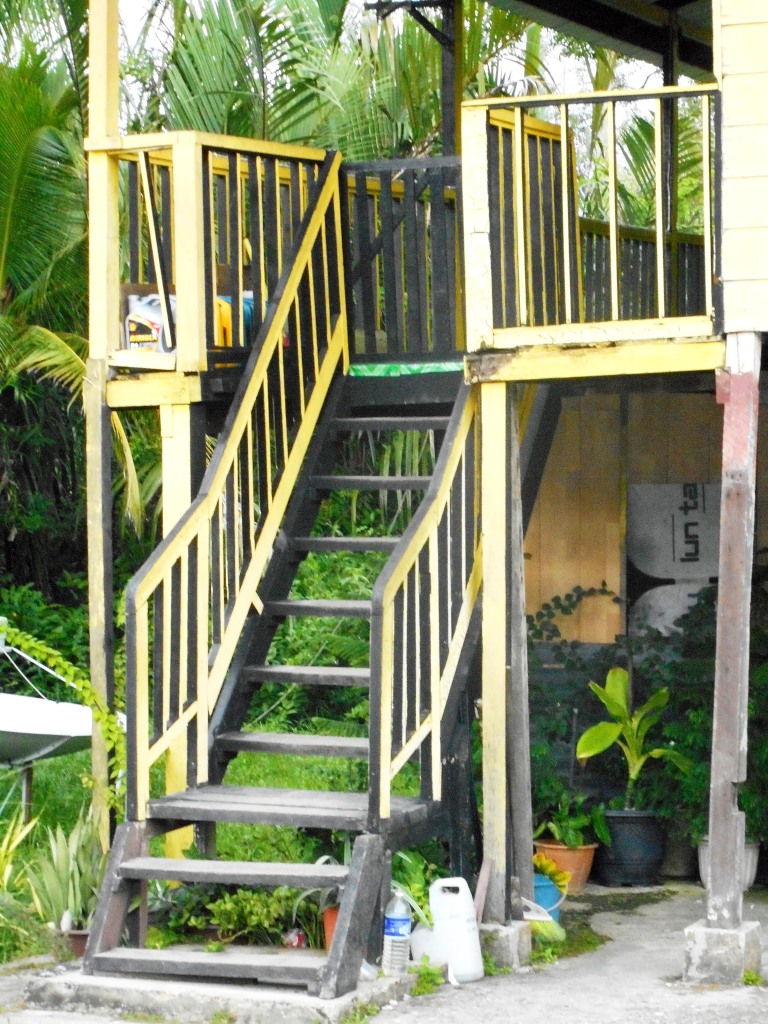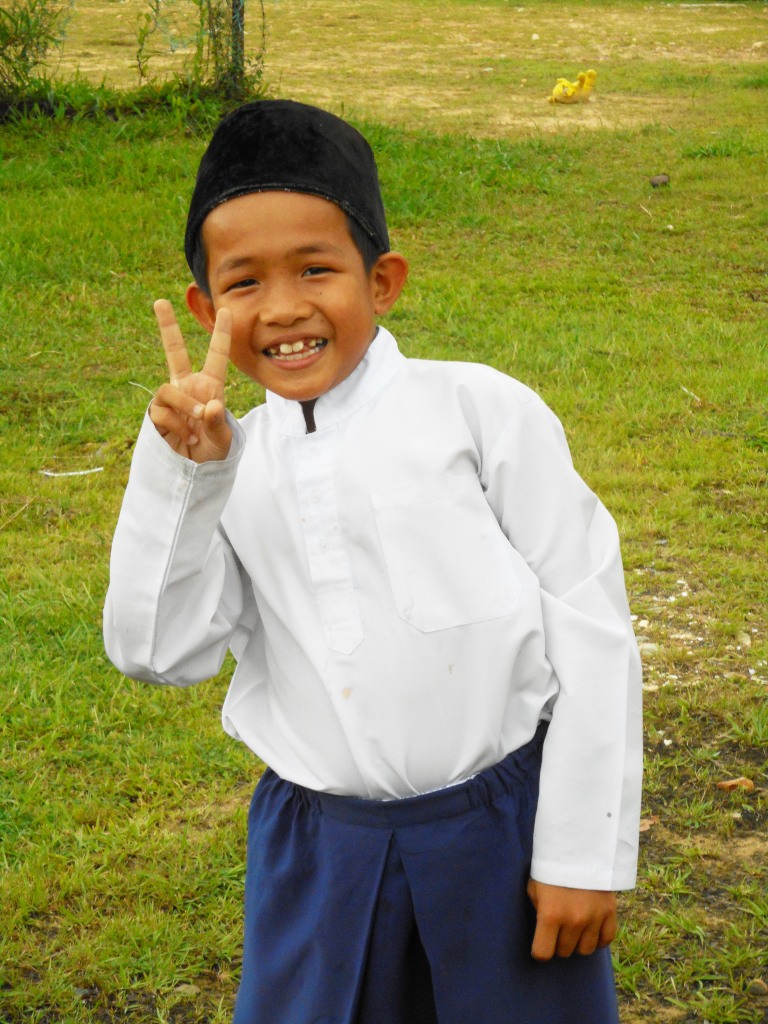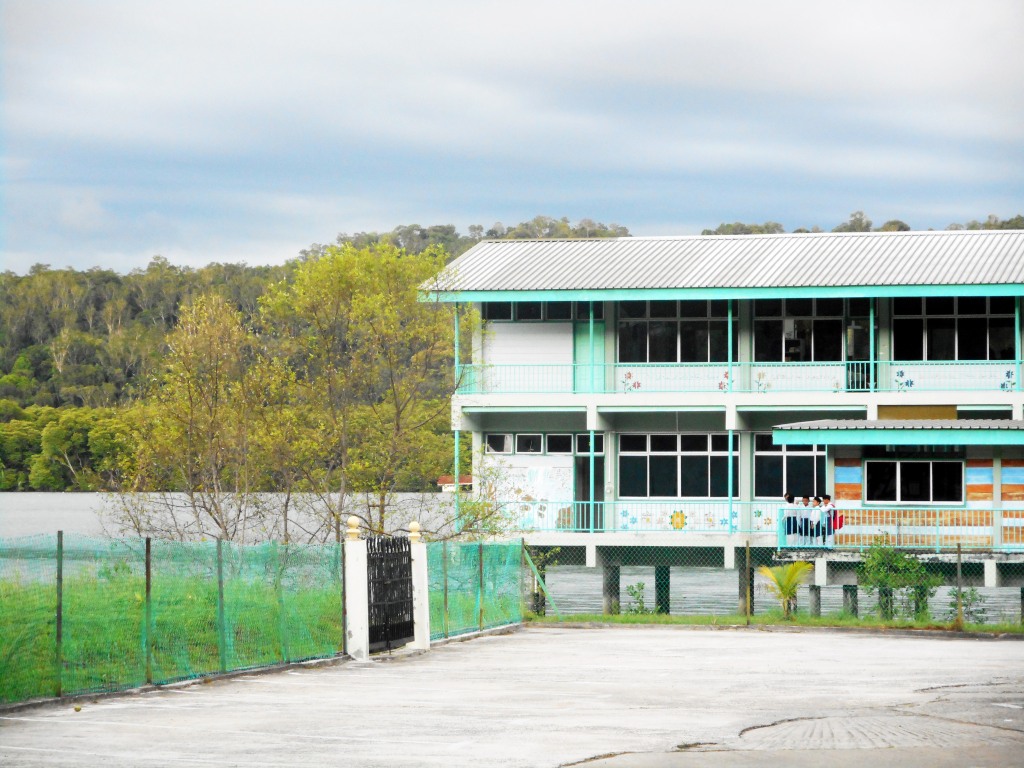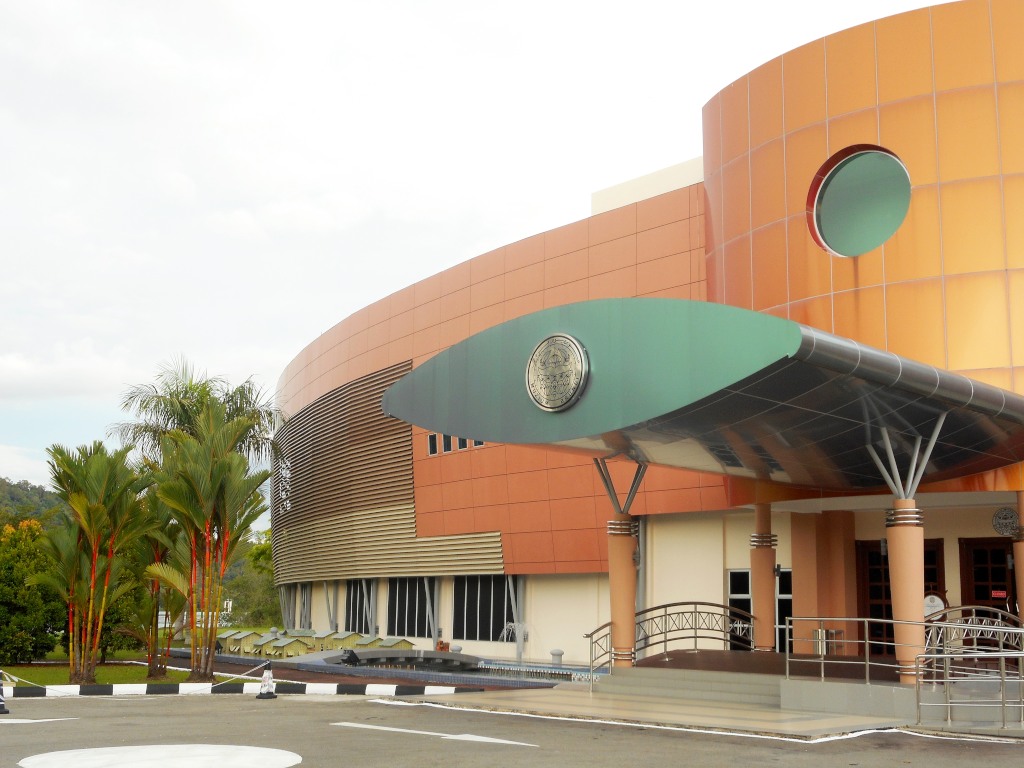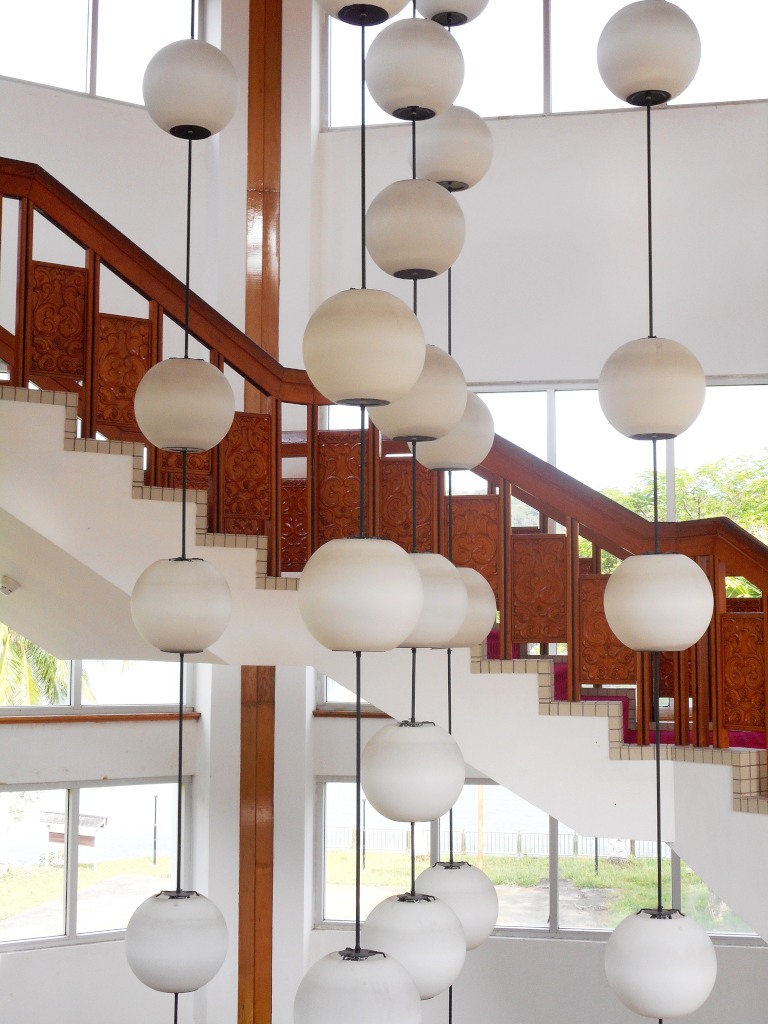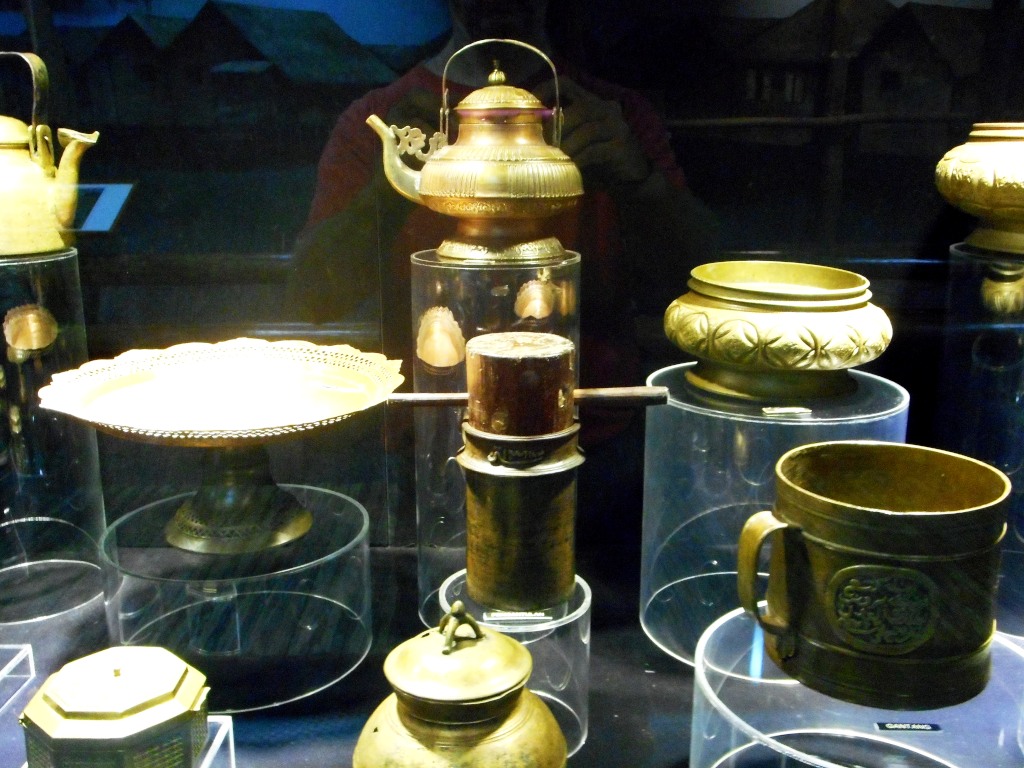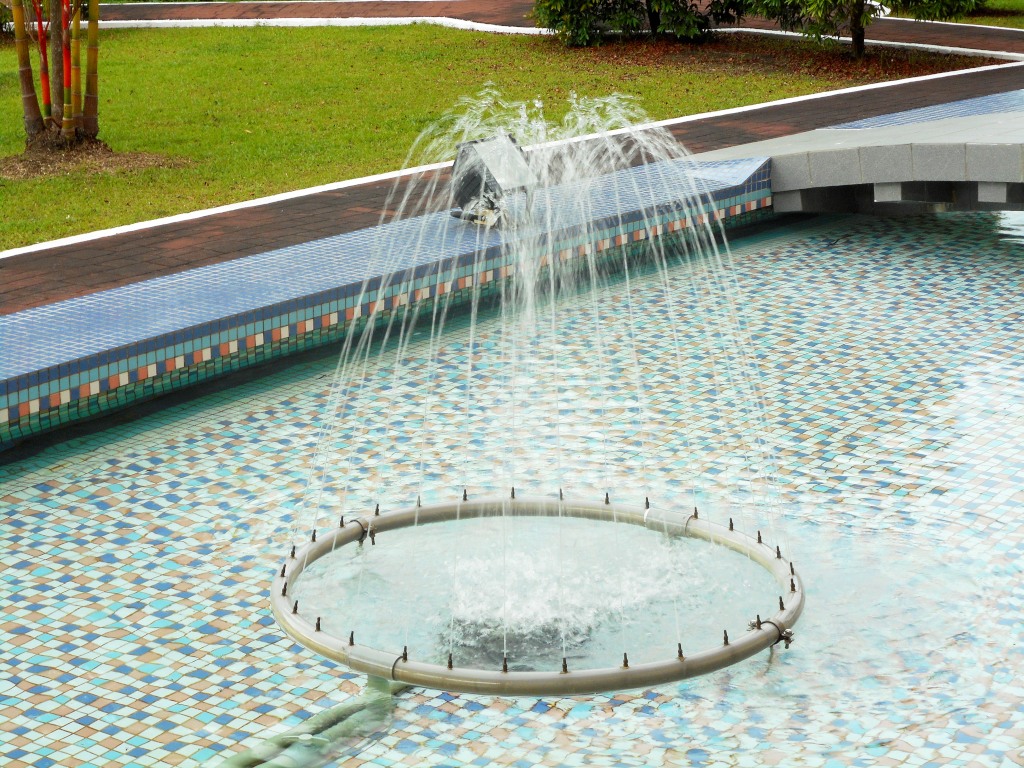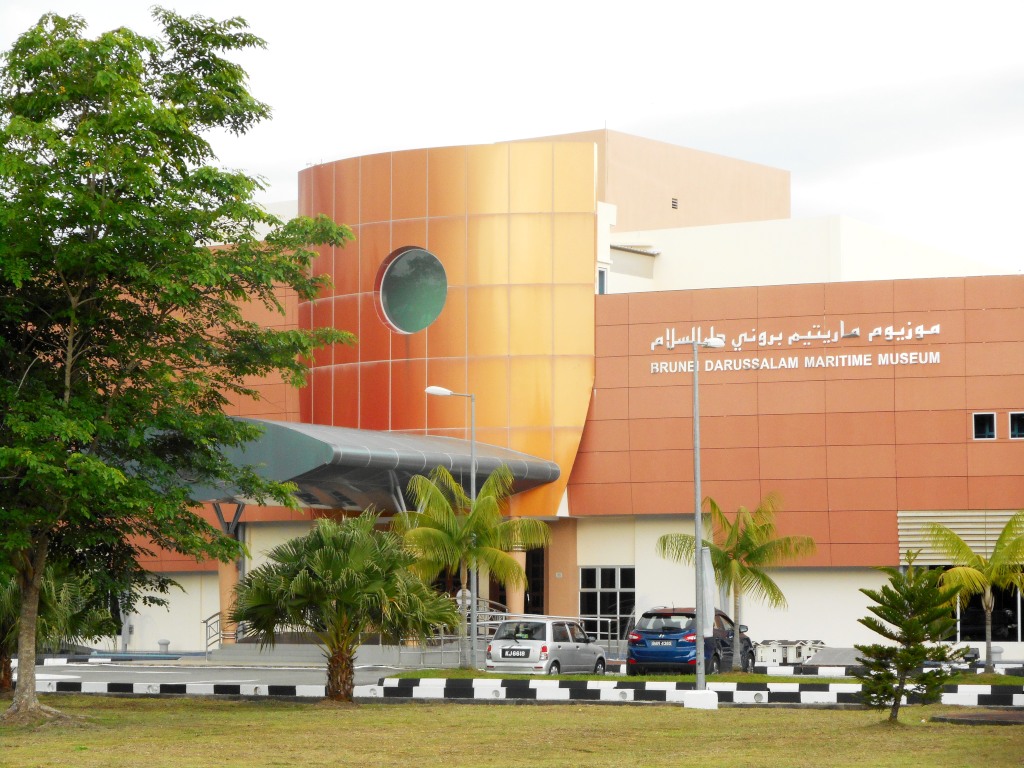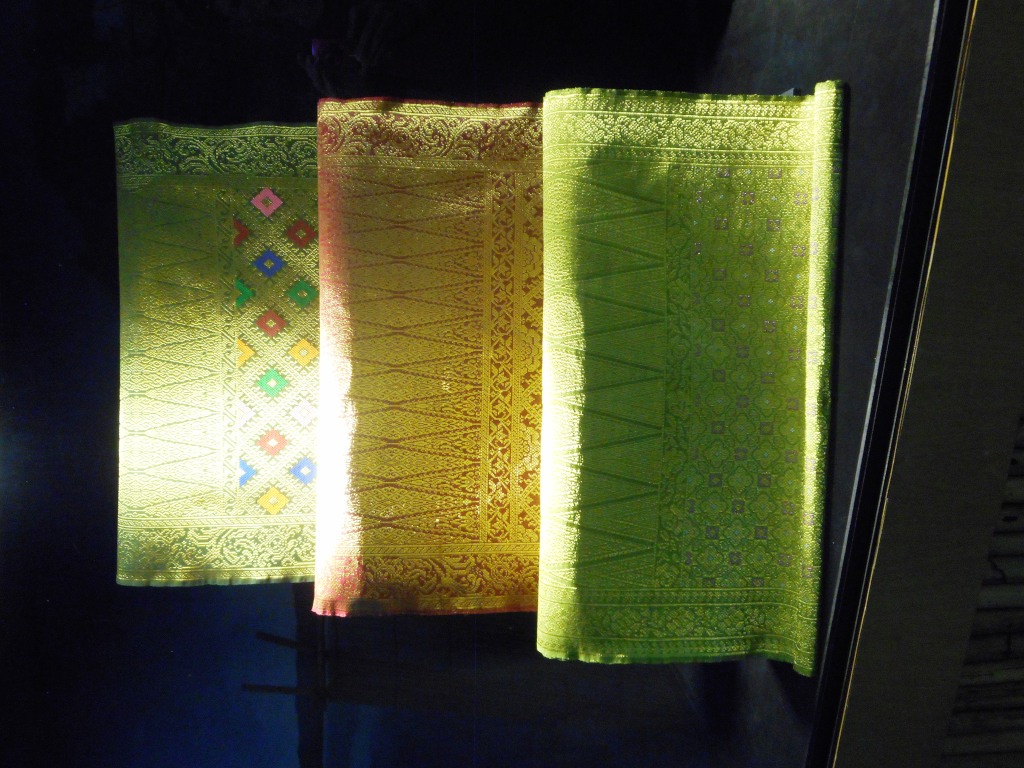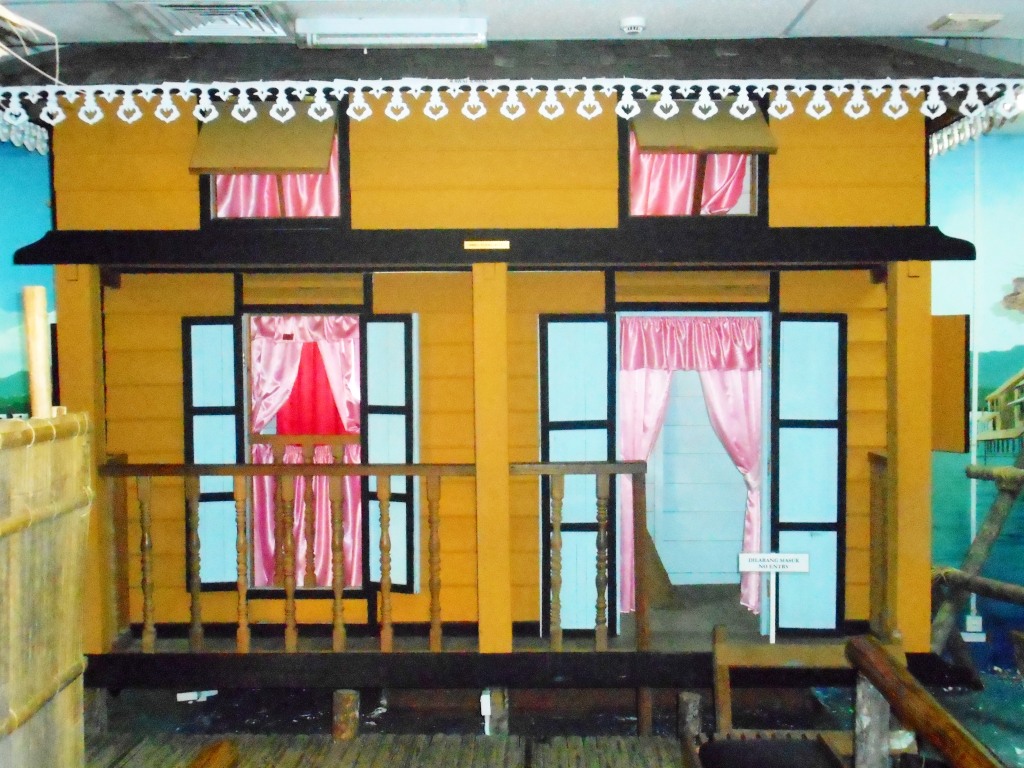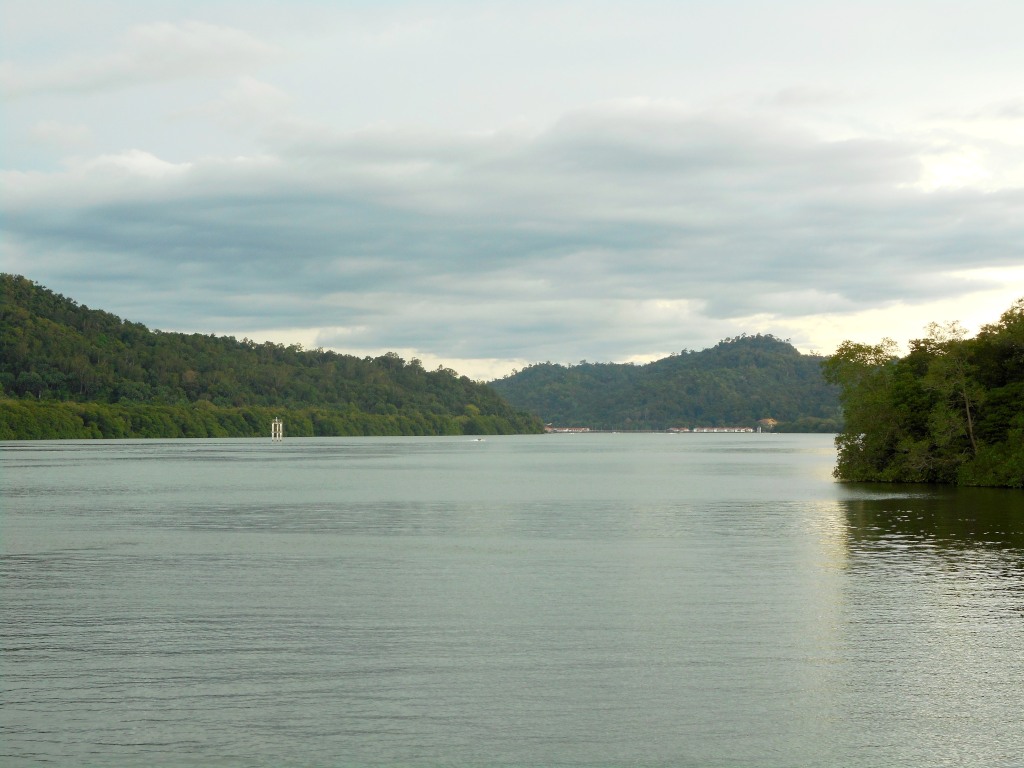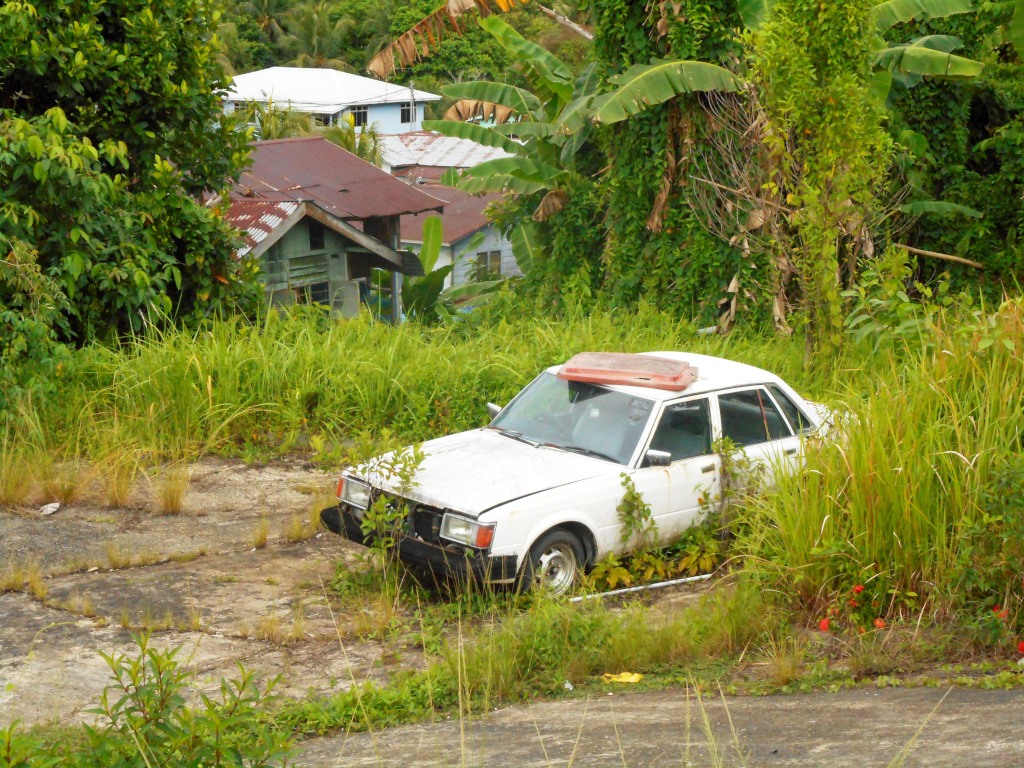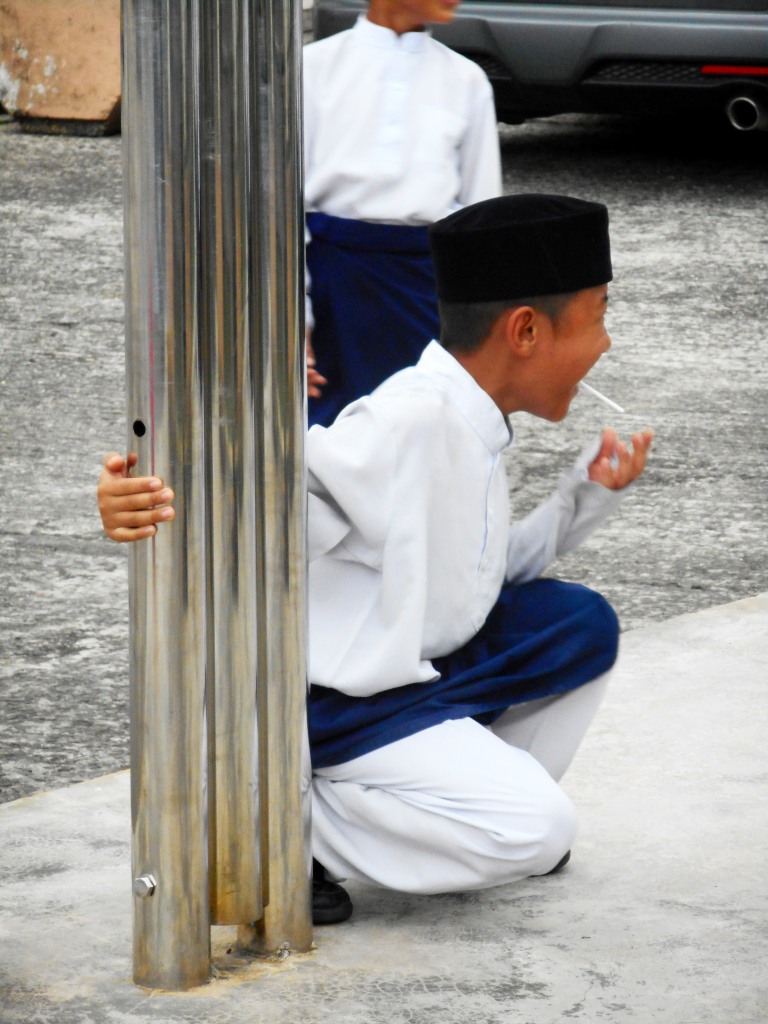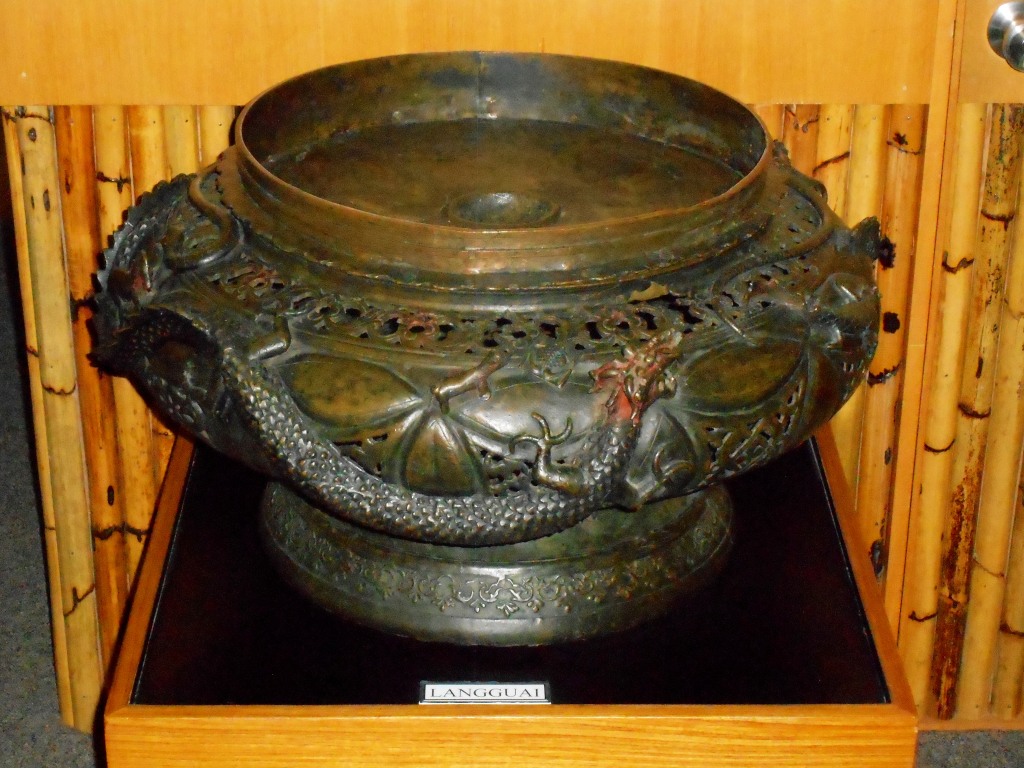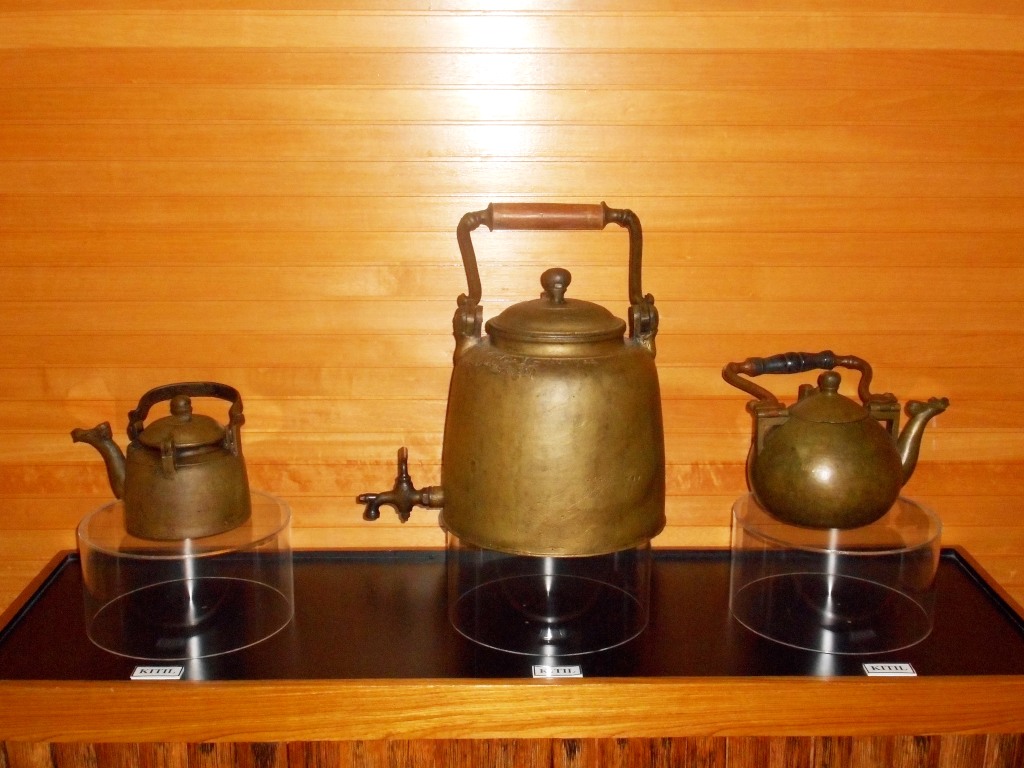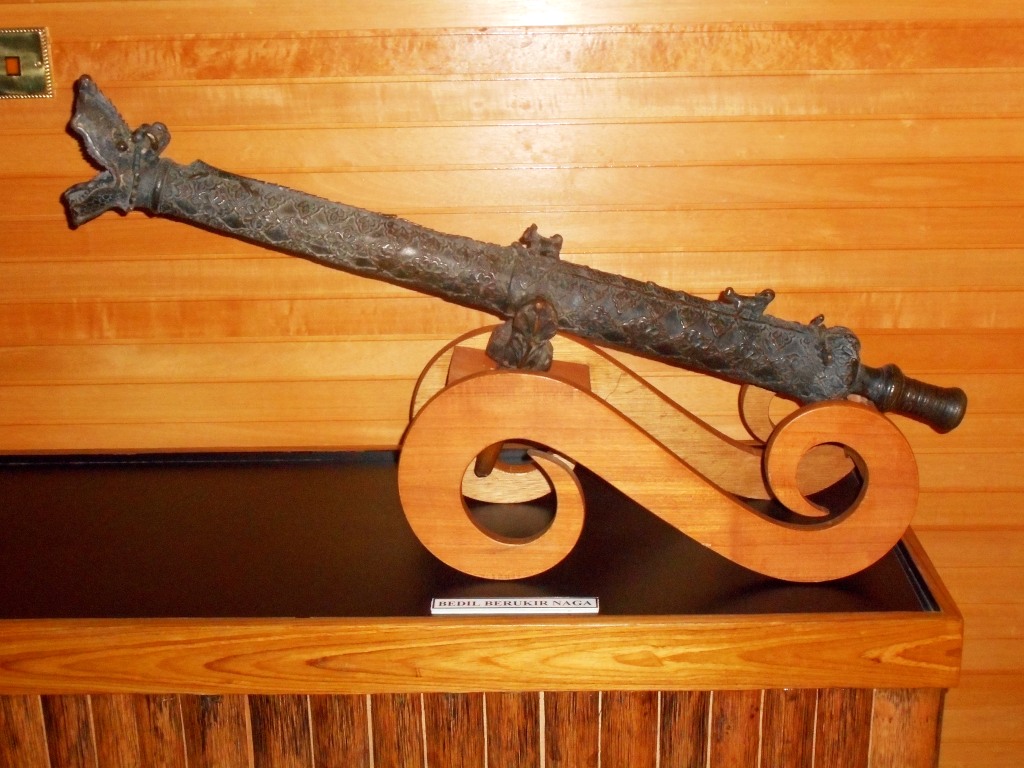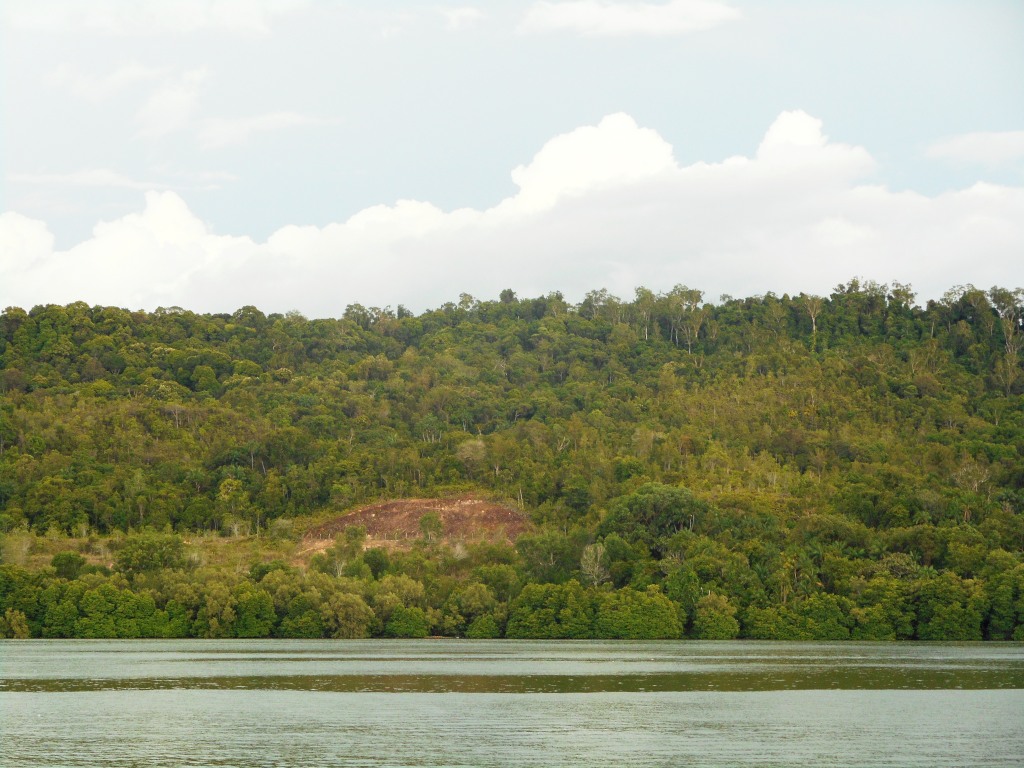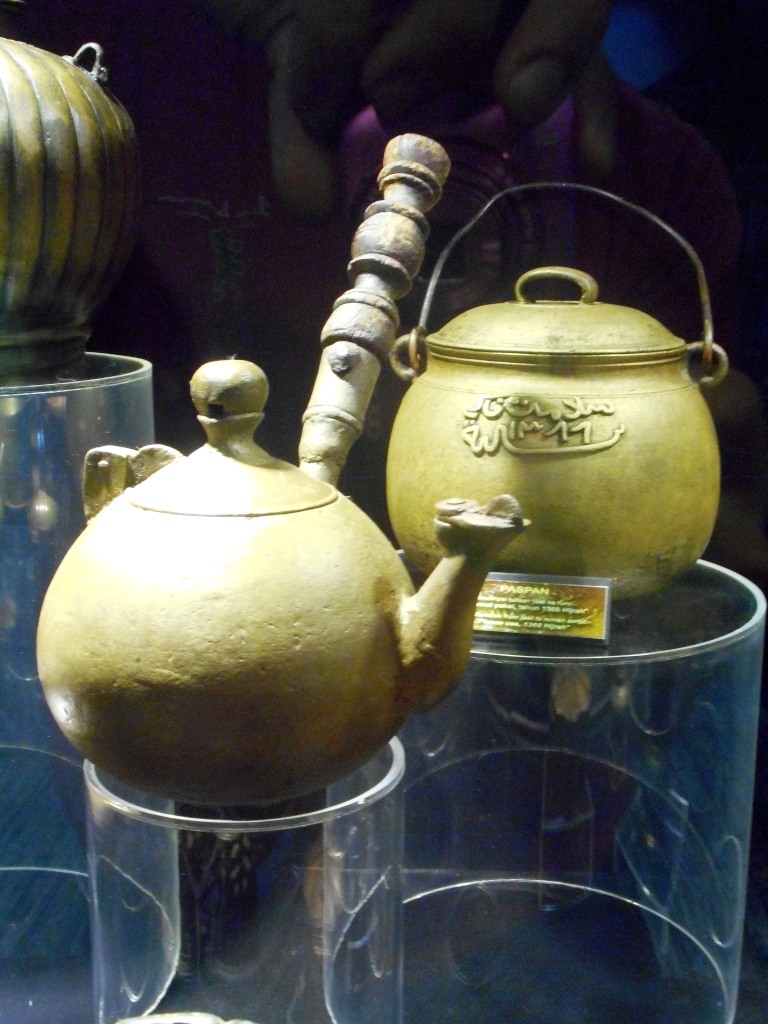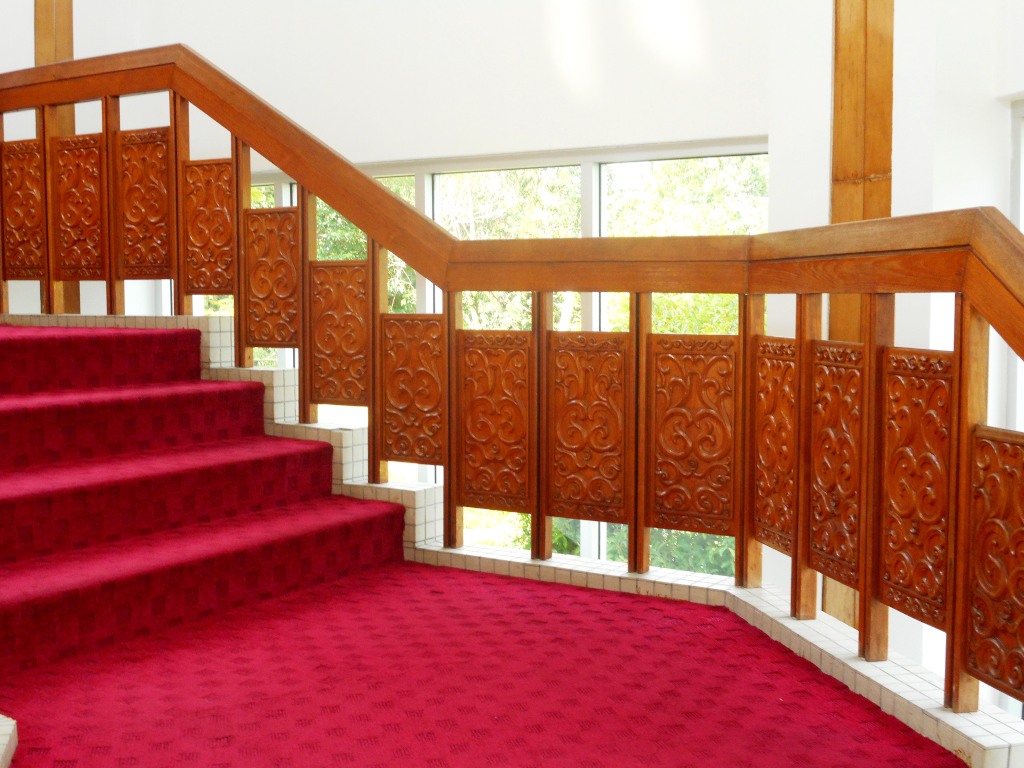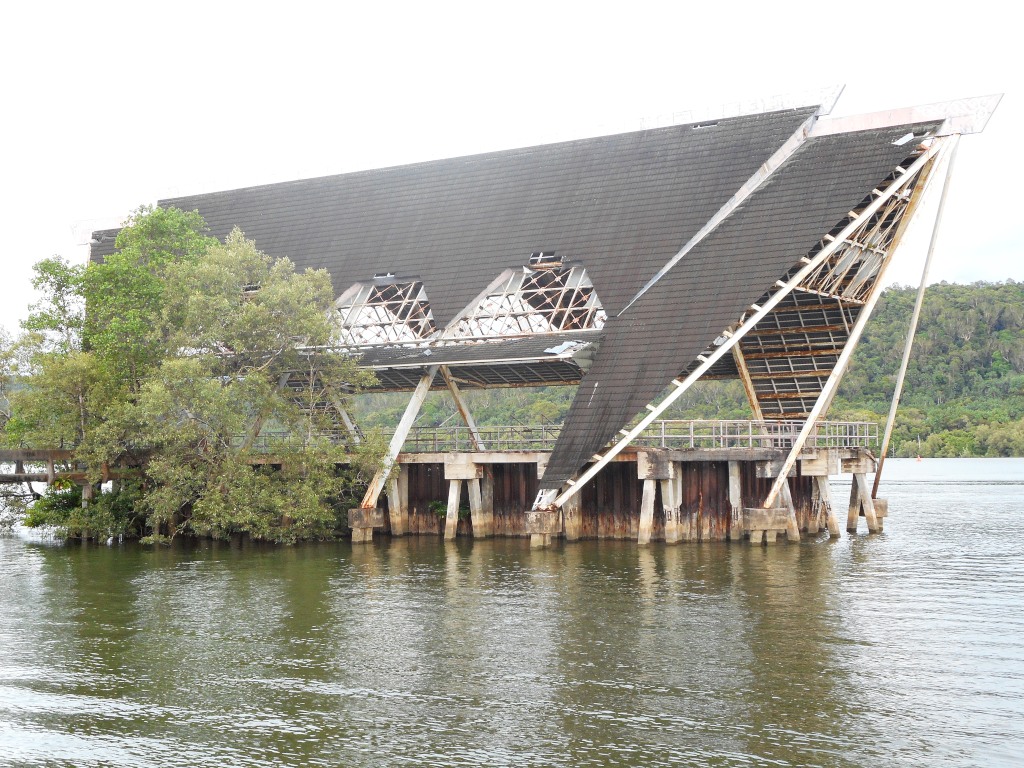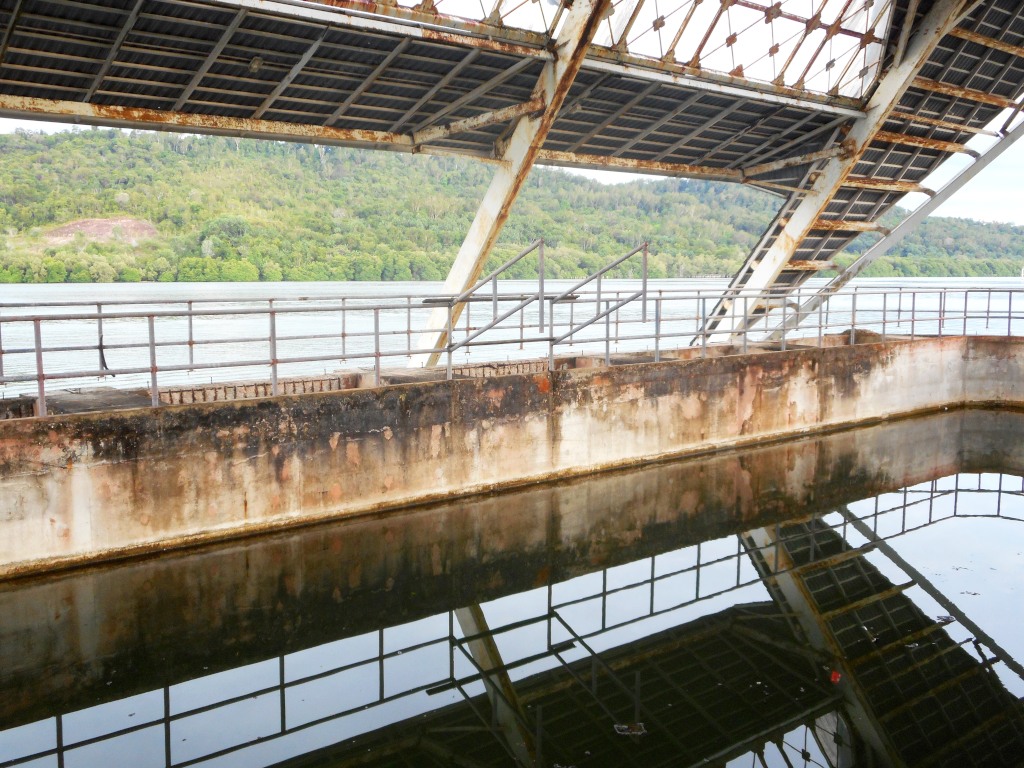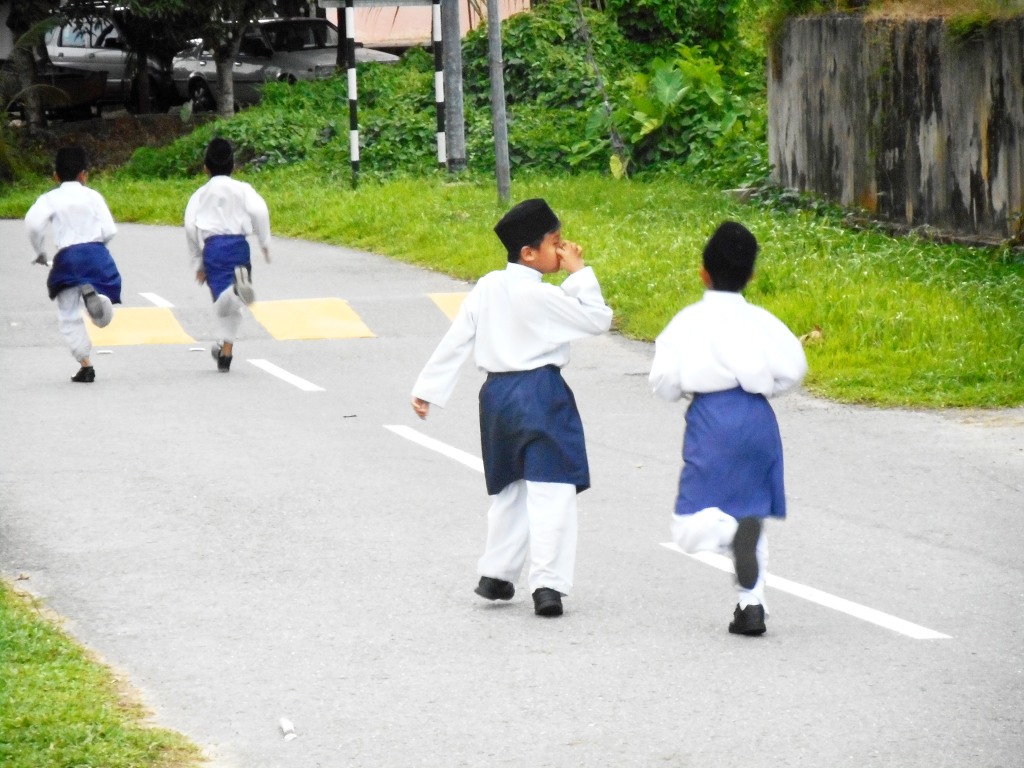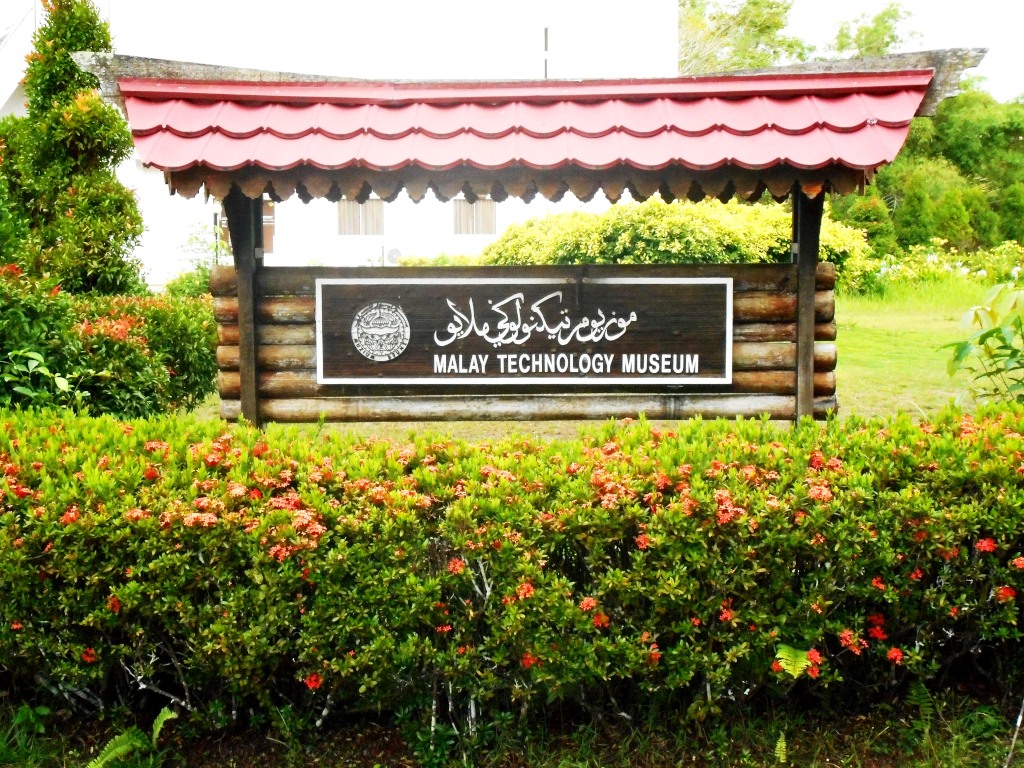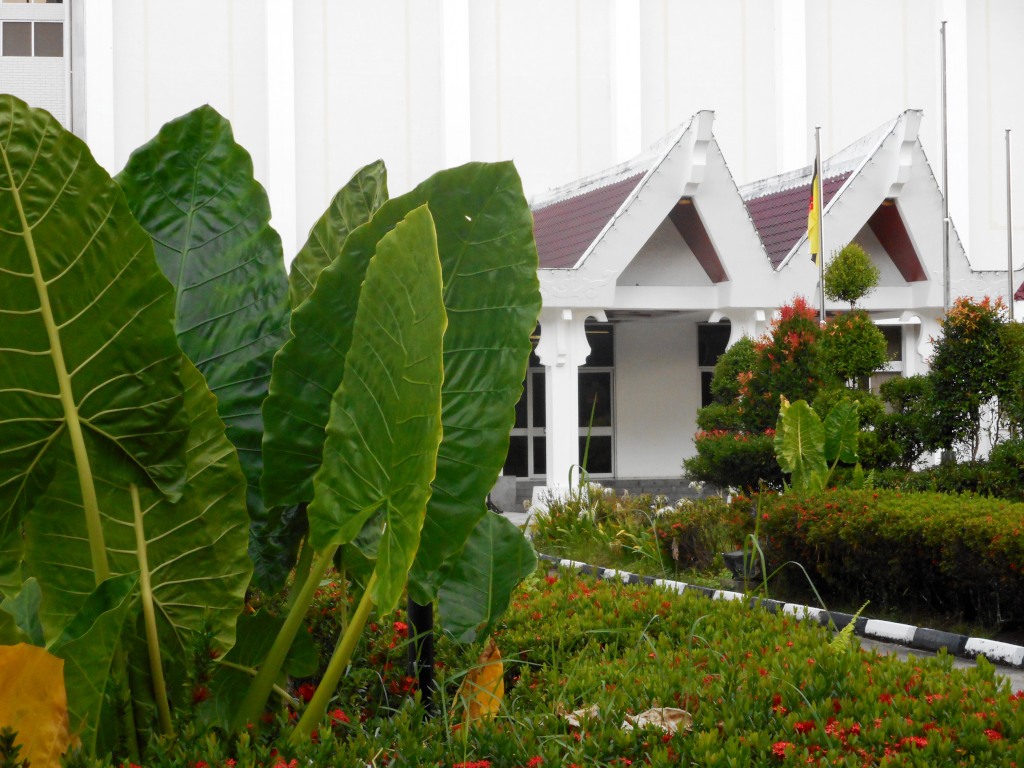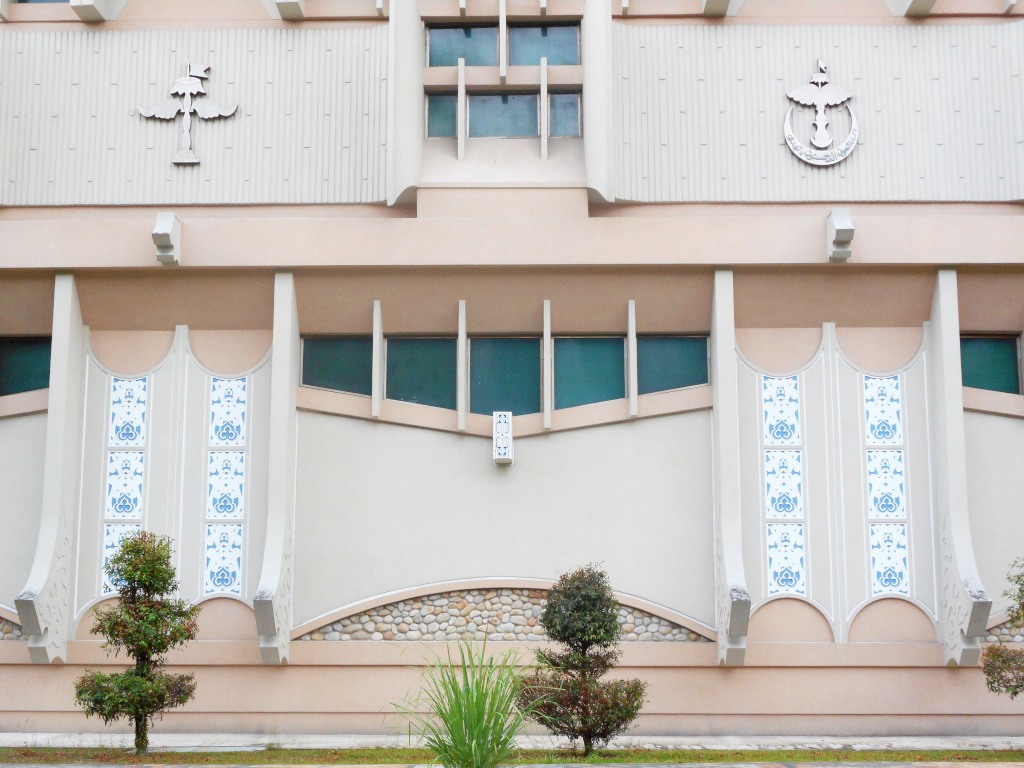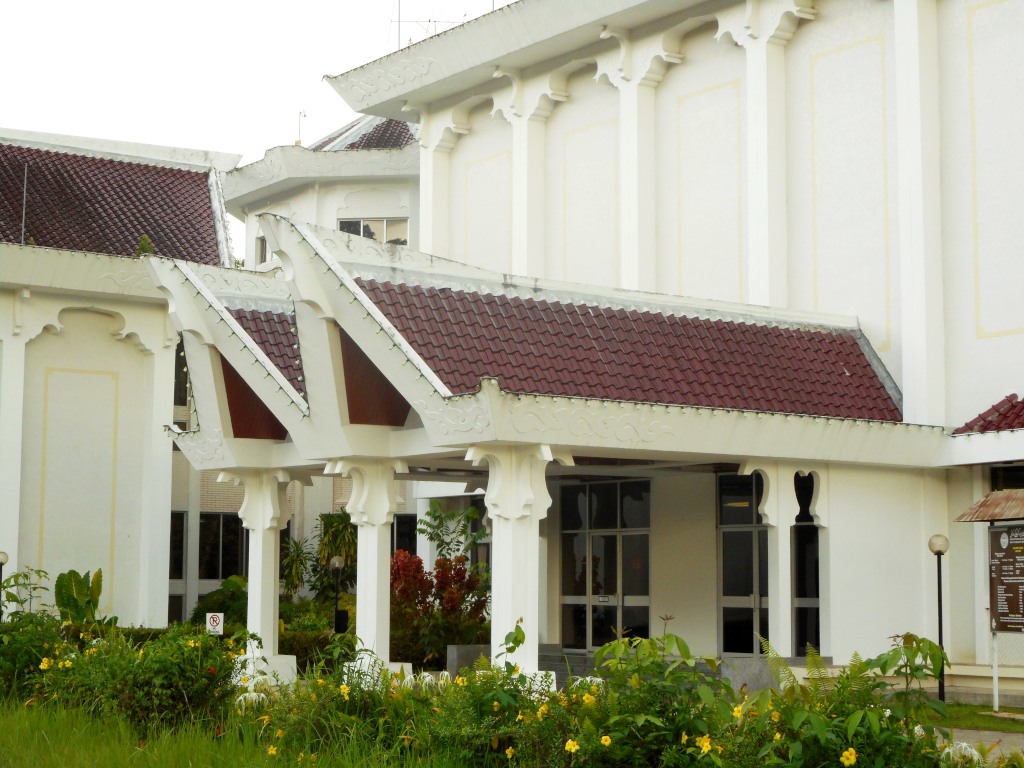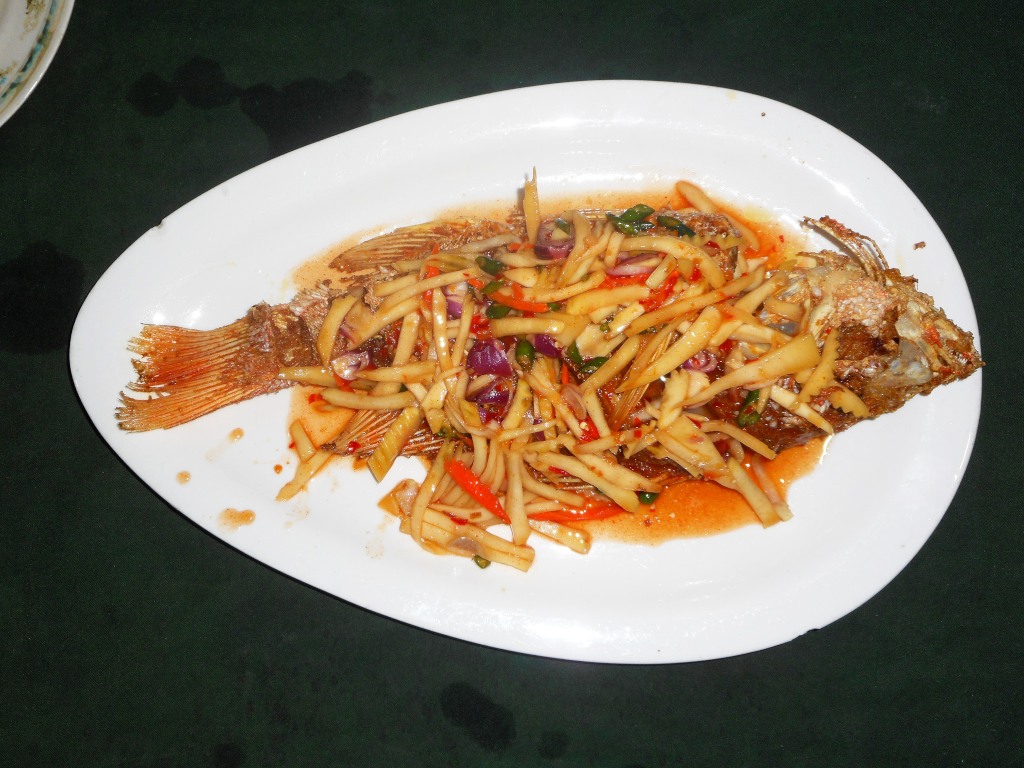May 26th, 2015
The bearded Pakistani man I had seen in the hotel before is now in the kitchen. Arif tells me he is a Pakistani currently living in England, and came to Brunei to explore the possibilities of working in the country as an electrician. However, he has been very disappointed, as the wages paid to electricians is trivial, at BR $500 a month far too little to survive and thrive on, never mind justify bringing his family here.
He can’t believe people put up with the low wages here, especially considering how wealthy the country is. And these wages are not just paid to immigrants – they are paid to locals also. Above all, he laments how utterly boring Brunei is.
I am somewhat taken aback – I could see that coming from young North Americans or northern Europeans, but a devout Moslem Pakistani? What exactly was he hoping for here? In Pakistan, wages are much higher and the cost of living much lower, but he would just never consider going back, given the degree of corruption and insecurity in the country.
Life in the country is so utterly insecure, you have no idea as to when you may be robbed or your children kidnapped. It seems that the laws privilege the criminals and the rich, but don’t benefit anyone else. Pakistan is another country where things have gone very wrong, and it’s tragic for the people. At least he can go back to England, although I wonder how the average Englishman thinks of yet another devout Moslem Pakistani in their midst.
He grins laconically when I tell him to consider the trip here as a vacation. I am sure he can probably think of other things to do with his money than come to Brunei on vacation. He leaves the room, leaving me to finish my bowls of granola with one of the neighbors’ tiny kittens nibbling at my feet.
The morning progresses along its usual random course. Just as I am about to leave the room for today’s destination, the museums I had been forewarned would be a waste of time to visit, I check the schedule, only to realize that they close around noon and reopen around 2:30. Another reason to stay on in the AC comfort of my slightly drab room, although I should really leave prior to 2 pm to get a head start on the apparently hilly concourse leading to the museums.
Eventually I emerge, well after 2:30 has come and gone, although fortunately, the young woman of the reception fame offers her father’s services, the car full of children waiting to drive to some Indian eatery for high tea. He contradicts what the woman at the airport information had told me, namely that Kota Batu a very good area, preferred by ambassadors and senior government officials due its privacy and verdant aspect.
The museums are not really far from the area of the Apek Utama, but considering the sweltering heat and humidity, arriving by car seems to have been a much better idea. The Technology museum and neighboring Maritime Museum are set in a leafy enclave, occupying the two sides of a grass field. The adjacent riverside is shrouded in seething tropical vegetation, while a steep verdant slope rises to the main road.
Once inside, I see that the place will close in one hour. That seems quite ridiculous, but I will have to rush through here in half an hour and then over to the Maritime museum in the ensuing half hour. On the other hand, it becomes apparent that I will probably have enough time, as there are only two rooms of displays, it being completely unclear as to how or why such a large multi-story structure has been built for the purpose of effectively just providing exhibits in two large rooms.
Traditional Malay music alternates with Moslem prayer, the heavily blue-and-white cowled women at the reception a very clear illustration of the devout religiosity being espoused in Brunei. There are two other guests perusing the exhibits, which is almost surprising in this off-beat museum. At the same time, it does legitimately attempt to curate the Bruneian Malay ethnography.
The name of the museum is quite misleading, as it depicts the idea of technology used by the traditional Malay people of Brunei, and not technology in general. Both rooms provide exhibits that run around the periphery of the room.
One room features a raised bamboo platform connecting a series of models of traditional Bruneian houses, small placards describing the form of construction and the purpose of each house, the structures evidencing the far more traditional and modest lives that the Bruneians would have lived historically. In the second room, a raised bamboo platform runs the length of all four sides of the room, on the outside a sequence of model studios showing traditional artisans at work in a variety of metallurgical professions as well as different fishing technologies.
Paraphrasing from placards in front of the exhibits: “A variety of fishing cages are described in the exhibits, including the rigis, a comb-like device made of bamboo and coconut palm leaves, used to rake the shallow river waters in a boat’s wake. The bekarang style of fishing would typically occur evenings, one person in the boat paddling and steadying the net, and the other beating the water in front of the boat, thus driving the fish into the net.
The tugu is another fishing trap, but used only in swift flowing water, typically used near the mouth of a river. It is composed of a row of nets attached to two wooden columns, each net divided into five parts, an entry point, front section, middle section, ‘inflated’ section, and end section. Several people are needed to set up the nets at low tide, and once high tide occurs, the fishermen troll through the sequence of nets for the desired fish.
The balat is a fish trap made of lashed bamboo splits normally set up like a fence in a shallow part of the river. A type of bamboo called buluh baloi resistant to water is used to make these traps. A shed called the balai kabatan would be erected in front of a fisherman’s house for the purpose of making the fish traps. The creation of the balat involve the splitting of the bamboo, immersing the splits in the water, whittling the bamboo and braiding the strips into a balat using rattan.
The lintau is a fish trap made of split bamboo, divided into two compartments, the pengalok and ayangan, a wall-like structure made of split bamboo intended to lure fishes to swim towards a small circular enclosure called the bunuan. Each of these compartments has tongues preventing fish from swimming towards the entrance of the lintau. Once the fish have swum into the bunuan, it is easy for fisherman to scoop them out.
Weaving traditionally only served the privileged minority but was later diffused to the general populace, the skills disseminated to a larger number of villages, the work performed on the petenunan handloom, used to achieve intricate designs with high quality threads. The motifs created were based on plants and flowers, and synthesized into colourful geometric patterns, including jongsarat (‘boat full of passengers’), kain bertabur (‘brightly scattered stars’), sipuggut (‘ruffian’), sukmaindera (‘eye of the soul’), silubang bangsi (‘flute holes’) and arap gagati (‘slanting cuts’). The fine woven cloth was usually worn during royal ceremonies, official state functions, wedding ceremonies and religious functions.
On the subject of metallurgy: silversmithing was a highly regarded craft in the Kampung Ayer village, traditional silver-based crafts including the cupu manggis (mangosteen-shaped jewelry box), pasigupan (smoking pipe), kiap (fan), cupu (vase), kabuk Panastan (jar with lid), kaskul (bowl with lid), peberahan (incense burner), tumbak (ceremonial spear).
The ideas for designs were copied from local plants and flowers, and patterned according to the artisans’ skills and imagination. Goldsmithing, on the other hand, was a cottage industry produced in Kampung Ayer that was demanded by the royal family and related aristocrats. Skilled artisans produced elaborate bracelets, necklaces, anklets, rings, brooches, earrings and traditional wedding regalia.
By the middle of the 20th century, Chinese goldsmiths threatened to supplant the traditional Malay goldsmiths, although this craft was later institutionalized at the Brunei Arts and Handicraft Training Centre in Bandar Seri Begawan.
Roof thatching of traditional Malay houses used the fronds of nipah, a palm that used to grown in abundance along the Brunei river. Men would gather the leaves while the roof-making itself was done by women. Nipah was gradually replaced with wood shingles and later metal roofing.
Boats remain the most important means of transport in Kampung Ayer and hence the skill of boat-making is still preserved until today. The most popular boats include the perahu tambang (water taxi), which is used by villagers to transport people in and out of Kampung Ayer as well as up and down the river. Boats are fabricated in a special shed called balai pemburisan. Many other boats are crafted in these sheds, but the vast majority of these other styles of boats are no longer used.”
Across the way, the Maritime museum promises a maritime focus of the Malay culture, illustrating the types of ships that were built traditionally as well as other historical tidbits of interest, the focus of the current exhibition a joint cultural project between Guangdong province in China and Brunei, illustrating a relationship that goes back centuries in time.
Tombstones, white bone china and model ships are prominent in the exhibition, evidence of Chinese culture in Brunei and Bruneian culture in China, as well as images of the current sultan and leaders of China at joint gatherings.
As the matrons in identical cowled uniforms hover about, I rush through the exhibit in even less time than in the Technology museum, leaving just as a tour bus of Chinese students rushes towards the entrance, although visiting this museum is almost pointless, considering how small the exhibit is – and again in an utterly unused huge space.
As trivial as the museum displays may be, the fecund environment around the museums is compelling, particularly the views over the dark river, what with the banks drooping in dense vegetation. The frame of a large open-faced gabled structure stands on the open water, accessed by means of a raised concrete platform, seemingly abandoned and with unclear purpose. A few structures are visible in the distance, but it seems that the river flows into the wilds to the east.
Returning to the main road, tiny children in blue and white uniforms stream from the school at the junction, the boys wearing white tunics and blue caps, the girls with blue cowls and white frocks. Given that I see a bus passing by on the undulating road in the opposite direction, I may be able to catch a bus on the way back into town.
I rise up the hill towards the Brunei museum, currently closed for apparent repairs, although I can’t imagine the place being much more interesting than the displays I saw at the Technology and Maritime Museums. And I am in luck – a bus does stop and I get off behind an Indo-Australian young woman, who seems vaguely interested in what I have to tell her about the city, but not much more.
The road weaves along the scenic riverside terrain of Kota Batu back to the centre of town. I give the young Australian woman and her cohort some more information about town and local hiking opportunities, but they don’t seem too interested. No matter – I wanted to head to de Royale cafe to write postcards anyway.
And who comes in but Farid, the traveler I had met here a few days ago with the F100 analog camera. I convince him to accompany me to the Taman Selera and try the seafood at Bob Ume, the place I visited several days ago. He seems occasionally perturbed by my outlandish statements, but I am definitely not a cautious conversationalist.
He has traveled a lot and loves India, a country he has visited numerous times. He also speaks very highly of the Philippines, perhaps another country I should visit myself. What’s more, he also recently visited Myanmar and Rakhine state, having been traveling since December and just as myself will soon be heading home. We deplore the conditions of the Islamic world and the state it has been reduced to. He tells me the Moslem immigrants in France became decidedly more religious with the repercussions of 9/11.
We decide to split a grilled red snapper in mango sauce, utterly delectable, with a very fine fruity spicy mango sauce and a bed of veggies overtop the gutted whole grilled fish. We consume the fish with gusto as the neighboring tables full of Malay men and women observe us curiously, their smiles indicating tacit and enthusiastic approval …

